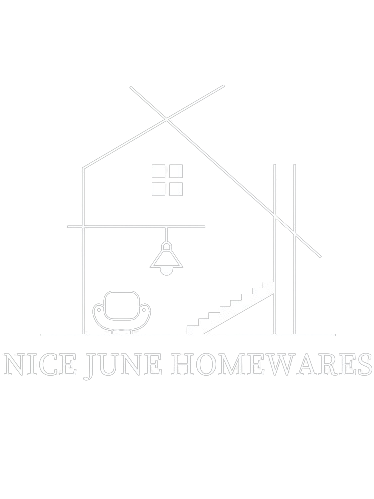It is more important than ever to stand out in the cutthroat real estate market of today. Among the myriad of marketing tools available to real estate professionals, drone photography has emerged as a revolutionary way to showcase properties. Drones provide dynamic, high-quality aerial views that allow listings to stand out from the competition and draw in potential buyers by capturing angles and perspectives that were previously unattainable.
The Evolution Of Real Estate Photography
Traditional real estate photography focuses on ground-level images that capture the interiors and exteriors of a property. While effective to some extent, these images can lack the “wow factor” needed to truly captivate buyers. With the advent of drones, real estate marketing has taken a giant leap forward. Drones provide a bird’s-eye view of properties, highlighting features like expansive backyards, surrounding landscapes, and proximity to amenities such as parks, schools, and waterfronts.
This technology isn’t just a trend—it has become a cornerstone of modern real estate marketing. Buyers have grown accustomed to high-quality visuals, and aerial imagery not only meets but exceeds their expectations. Listings with drone photography not only attract more clicks online but often generate faster sales. When considering the drone real estate photography cost, it’s important to view it as an investment that enhances property appeal, attracts more buyers, and ultimately accelerates the sales process.
Unique Perspectives That Make An Impact
The capacity of drone photography to provide distinctive viewpoints that are impossible to obtain through conventional methods is one of its biggest benefits. The size and arrangement of a property can be captured by aerial photos and films, which offer a thorough overview of the land, surrounding properties, and local landmarks. For large estates, farms, or properties with intricate landscaping, drone footage is especially impactful.
For example, a beachfront home benefits greatly from aerial imagery that showcases its proximity to the ocean, while a suburban property may stand out by highlighting its spacious backyard and surrounding greenery. These perspectives are invaluable in helping potential buyers visualize the property and its surroundings.
Enhancing Storytelling Through Video
Beyond still photography, drones have revolutionized the use of video in real estate. Aerial videos create immersive, cinematic experiences for buyers. Realtors can craft virtual tours that begin with sweeping views of the neighborhood before zooming in to focus on the property itself. This seamless transition from the macro to the micro allows potential buyers to grasp both the larger context and finer details of the home.
Incorporating drone footage into promotional materials also sets a listing apart. Videos shared on social media, real estate platforms, and agency websites are far more likely to capture attention when they feature stunning aerial shots. In an era where attention spans are short, these compelling visuals can make the difference between a casual browser and an engaged buyer.
Highlighting Key Features
Properties with unique selling points, such as extensive acreage, waterfront access, or architectural highlights, benefit immensely from drone photography. It provides a platform to highlight these features in a visually striking way. For instance, a drone can capture the symmetry of a sprawling estate, the curvature of a private driveway, or the glittering reflection of a pool under the sun.
Additionally, aerial images can convey the relationship between a property and its surroundings. Is the home nestled in a quiet cul-de-sac? Does it boast scenic mountain views? Is it just minutes away from bustling city life? These details are often hard to capture from ground-level photography but become evident in drone footage.
Building Trust And Transparency
Drone photography also enhances transparency in real estate marketing. Potential buyers are given a more accurate representation of the property and its surroundings, reducing the chances of surprises during in-person visits. Because there is minimal opportunity for misunderstanding due to the overhead views, this increases confidence between the buyer and seller.
Moreover, the use of drones aligns with the growing demand for more comprehensive virtual experiences. Detailed aerial pictures might help buyers who can’t physically visit properties, including those moving from another city or country, make better judgments. To attract more bookings and stand out in a competitive market, photograph your Airbnb using drone photography to capture stunning aerial views of the property and its surroundings.
The Cost Factor
While drone photography may seem like an added expense, it is often a worthwhile investment. The expense can be more than offset by the potential to increase the number of possible purchasers, decrease the time a property is on the market, and secure higher selling prices. Many real estate professionals report significant returns on investment when using drone photography as part of their marketing strategy.
Furthermore, as drone technology becomes more accessible, the cost of hiring professional drone photographers has decreased, making it a viable option for most listings.
A Marketing Must-Have
In an industry where first impressions are critical, drone real estate photography has proven to be a game-changer. Listings stand out in a crowded market thanks to their capacity to produce immersive experiences and breathtaking aerial vistas. As technology continues to evolve, drone photography will only grow in importance, becoming an indispensable tool for real estate professionals.
Whether you’re selling a modest family home or a luxury estate, drone photography elevates your marketing efforts to new heights—literally and figuratively. It allows you to tell a story, showcase the property’s best features, and leave a lasting impression on buyers. For real estate agents and sellers looking to stay ahead of the curve, embracing drone technology is no longer an option—it’s a necessity.

